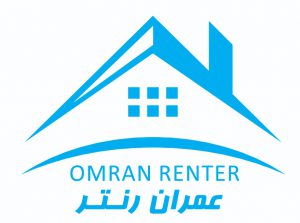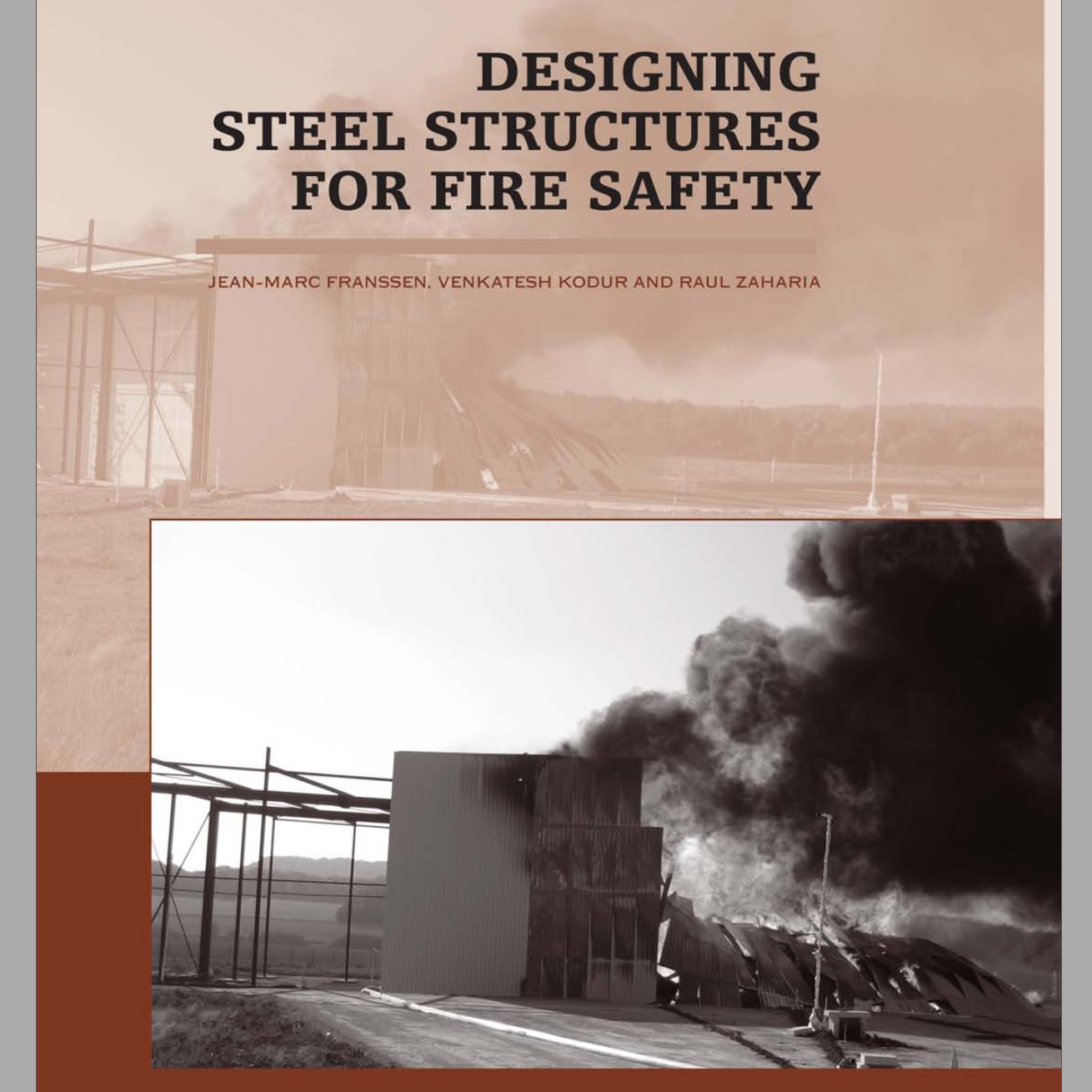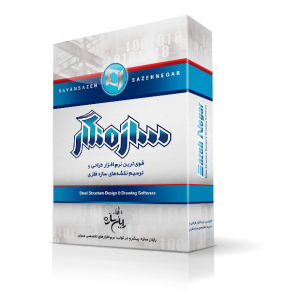توضیحات
کتاب طراحی سازه های فولادی برای ایمنی در مقابل آتش سوزی
Designing Steel Structures for Fire Safety
CHAPTER 1 – INTRODUCTION 1
1.1 Fire safety design 1
1.2 Codes and standards 1
1.2.1 General 1
1.2.2 Fire safety codes 2
1.2.3 North American codes and standards 3
1.2.4 European codes: the Eurocodes 4
1.3 Design for fire resistance 5
1.3.1 Fire resistance requirements 5
1.3.2 Fire resistance assessment 6
1.3.3 Eurocodes 6
1.3.4 Scope of Eurocode 3 – Fire part 7
1.4 General layout of this book 9
CHAPTER 2 – MECHANICAL LOADING 11
2.1 Fundamental principles 11
2.1.1 Eurocodes load provisions 11
2.1.2 American provisions for fire design 14
2.2 Examples 14
2.2.1 Office building 14
2.2.2 Beam for a shopping centre 15
2.2.3 Beam in a roof 15
2.3 Specific considerations 15
2.3.1 Simultaneous occurrence 15
2.3.2 Dead weight 15
2.3.3 Upper floor in an open car park 16
2.3.4 Industrial cranes 1
2.3.5 Indirect fire actions 16
2.3.6 Simplified rule 18
CHAPTER 3 –THERMAL ACTION 21
3.1 Fundamental principles 21
3.1.1 Eurocode temperature-time relationships 21
3.1.1.1 Nominal fire curves 21
3.1.1.2 Equivalent time 22
3.1.1.3 Parametric temperature–time curves 23
3.1.1.4 Zone models 25
3.1.1.5 Heat exchange coefficients 26
3.1.2 Eurocode localised fire, flame not impacting the ceiling 26
3.1.3 Eurocode localised fire, flame impacting the ceiling 28
3.1.4 CFD models in the Eurocode 31
3.1.5 North American time–temperature relationships 32
3.2 Specific considerations 33
3.2.1 Heat flux to protected steelwork 33
3.2.2 Combining different models 34
3.3 Examples 35
3.3.1 Localised fire 35
3.3.2 Parametric fire – ventilation controlled 36
3.3.3 Parametric fire – fuel controlled 37
CHAPTER 4 –TEMPERATURE IN STEEL SECTIONS 39
4.1 General 39
4.2 Unprotected internal steelwork 39
4.2.1 Principles 39
4.2.2 Examples 44
4.2.2.1 Rectangular hollow core section 44
4.2.2.2 I-section exposed to fire on 4 sides and subjected
to a nominal fire 44
4.2.2.3 I-section exposed to fire on 3 sides 44
4.3 Internal steelwork insulated by fire protection material 45
4.3.1 Principles 45
4.3.2 Examples 50
4.3.2.1 H section heated on four sides 50
4.3.2.2 H section heated on three sides 50
4.4 Internal steelwork in a void protected by heat screens 51
4.5 External steelwork 52
4.5.1 General principles 52
4.5.2 Example 52
CHAPTER 5 – MECHANICAL ANALYSIS 57
5.1 Level of analysis 57
5.1.1 Principles 57
5.1.2 Boundary conditions in a substructure or an element analysis 58
5.1.3 Determining Efi,d,0 59
5.2 Different calculation models 60
5.2.1 General principle 60
5.2.1.1 Tabulated data 60
5.2.1.2 Simple calculation models 61
5.2.1.3 Advanced calculation models 61
5.2.2 Relations between the calculation model and the part
of the structure that is analysed 62
5.2.3 Calculation methods in North America 62
5.3 Load, time or temperature domain 63
5.4 Mechanical properties of carbon steel 66
5.5 Classification of cross-sections 67
5.6 How to calculate Rfi,d,t ? 70
5.6.1 General principles 70
5.6.2 Tension members 71
5.6.3 Compression members with Class 1, 2 or 3 cross-sections 72
5.6.4 Beams with Class 1, 2 or 3 cross-section 76
5.6.4.1 Resistance in shear 76
5.6.4.2 Resistance in bending 76
5.6.4.2.1 Uniform temperature distribution 76
5.6.4.2.2 Non-uniform temperature distribution 77
5.6.4.3 Resistance to lateral torsional buckling 82
5.6.5 Members with Class 1, 2 or 3 cross-sections,
subject to combined bending and axial compression 83
5.6.6 Members with Class 4 cross-sections 87
5.7 Design in the temperature domain 88
5.8 Design examples 90
5.8.1 Member in tension 90
5.8.1.1 Verification in the load domain 90
5.8.1.2 Verification in the time domain 91
5.8.1.3 Verification in the temperature domain 91
5.8.2 Column under axial compression 92
5.8.2.1 Fire resistance time of the column with
unprotected cross-section 92
5.8.2.2 Column protected with contour encasement
of uniform thickness 94
5.8.3 Fixed-fixed beam supporting a concrete slab 94
5.8.3.1 Classification of the section, see Table 5.2 94
5.8.3.2 Verification in the load domain 95
5.8.3.3 Verification in the time domain 96
5.8.3.4 Verification in the temperature domain 97
5.8.3.5 Beam protected with hollow encasement 97
5.8.4 Class 3 beam in lateral torsional buckling 98
CHAPTER 6 – JOINTS 101
6.1 General 101
6.2 Simplified procedure 102
6.3 Detailed analysis 104
6.3.1 Temperature of joints in fire 104
6.3.2 Design resistance of bolts and welds in fire 104
6.3.2.1 Bolted joints in shear 104
6.3.2.2 Bolted joints in tension 105
6.3.2.3 Fillet welds 106
6.3.2.4 Butt welds 106
CHAPTER 7 – ADVANCED CALCULATION MODELS 107
7.1 General 107
7.2 Introduction 108
7.3 Thermal analysis 109
7.3.1 General features 109
7.3.2 Capabilities of the advanced thermal models 109
7.3.3 Limitations of the advanced thermal models 112
7.3.4 Discrepancies with the simple calculation models 113
7.4 Mechanical analysis 114
7.4.1 General features 114
7.4.2 Capabilities of the advanced mechanical models 117
7.4.3 Limitations of the advanced mechanical models 119
7.4.4 Discrepancies with the simple calculation models 123
CHAPTER 8 – DESIGN EXAMPLES 125
8.1 General 125
8.2 Continuous beam 125
8.3 Multi-storey moment resisting frame 126
8.4 Single storey industrial building 129
8.5 Storage building 133
ANNEX I – HIGHTEMPERATURE PROPERTIES AND
TEMPERATURE PROFILES 139
| I.1 Thermal properties of carbon steel | 139 |
| I.1.1 Eurocode properties | 139 |
| I.1.1.1 Thermal conductivity | 139 |
| I.1.1.2 Specific heat | 139 |
| 1.1.2 Thermal properties of steel according to ASCE | 141 |
| I.1.2.1 Thermal conductivity | 141 |
| I.1.2.2 Specific heat | 141 |
| I.2 Thermal properties of fire protection materials | 141 |
| I.3 Temperatures in unprotected steel sections (Eurocode properties) I.4 Temperatures in protected steel sections (Eurocode properties) ANNEX II – MECHANICAL PROPERTIES OF | 143 146 |
| CARBON STEELS | 149 |
| II.1 Eurocode properties | 149 |
| II.1.1 Strength and deformation properties | 149 |
| II.1.2 Thermal elongation | 151 |
II.2 ASCE properties 152
II.2.1 Stress strain relations for steel (Version 1) 152
II.2.2 Stress strain relations for steel (Version 2 153
II.2.3 Coefficient of thermal expansion 154
Bibliography 155
Subject index 161
This book is a major new contribution to the wider understanding of structural
behaviour in fires. The art and science of designing structures for fire safety has grown
dramatically in recent years, accompanied by the development of sophisticated codes
of practice such as the Eurocodes. The Eurocode documents have evolved over several decades and now represent the best international consensus on design rules for
structures exposed to fires.
Codes alone do not provide enough information for designers, especially as they
become more sophisticated and comprehensive. Most codes have been written by a
small army of dedicated experts, some of whom have been immersed in the project
for many years with the responsibility to provide the correct rules, not always providing adequate guidance for using those rules. Designers want to understand the basic
concepts of the code and the philosophy of the code-writers, together with hands-on
advice for using the code.
Structural design for fire is conceptually similar to structural design for normal
temperature conditions, but often more difficult because of internal forces induced
by thermal expansion, strength reduction due to elevated temperatures, much larger
deflections, and many other factors. Before making any design it is essential to establish
clear objectives, and determine the severity of the design fire. This book shows how
these factors are taken into account, and gives guidance for all those wishing to use
the Eurocodes for fire design of steel structures.
Prof. Jean-Marc Franssen has been a pioneer in the field of structural design for fire
safety, with extensive involvement in codes, software development, research, teaching, and consulting. He is also well known for establishing the SiF Structures in Fire
international workshops. His co-authors are Dr Raul Zaharia, a leading European
researcher in structural fire engineering, Prof. Venkatesh Kodur from Michigan State
University who is one of the top researchers and teachers in structural fire design in
North America. Together they have produced a book which will be extremely valuable
to any design professionals or students wishing to use and understand Eurocode 3, or
to learn more about the design of steel structures exposed to fires.
The fire sections of the Eurocodes are considered to be among the most advanced
international codes of practice on fire design of structures, and have attracted attention
around the world. This book is an excellent introduction for readers from other regions
who wish to become knowledgeable about the philosophy, culture and details of the
Eurocodes for structural fire design.








نقد و بررسیها
هیچ دیدگاهی برای این محصول نوشته نشده است.